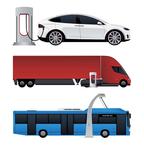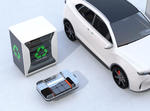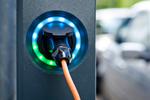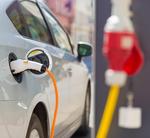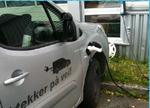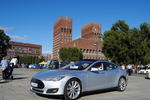You are here
- >
Search in TOI other publications and articles
Search
-
Research project: ELAN
Results:
The research objective of ELAN is: Enhanced knowledge on the potential for replacing the sales of ICE (Internal Combustion Engine) passenger vehicles completely with electric vehicles by 2025, as suggested in the latest Norwegian National Transport Plan, the prerequisites for achieving such a target, and the short and long term societal consequences of doing so.
-
Expensive and demanding, but possible to achieve zero emission targets in Norway
Achieving road traffic electrification targets set in the Norwegian National Transport Plan will be very demanding (and expensive), but it can be achieved.
-
Transport technology and Environment
Transporting people and freight generate a considerable amount of local exposures, and about one third of Norwegian emissions of greenhouse gases.
Real emissions from diesel cars exceed substantially the type approval values – see “Dieselgate”. Norway needs to continue measuring vehicle emissions under Nordic colder climate conditions and realistic urban driving cycles. Norway is the world leading pilot area for electro-mobility and our research of international interest.
Are the billions spent on noise insulation and prevention by road, railway, and air-port authorities to satisfy Norwegian zoning limits effective use of public funding? The consequences of restrictive regulations should be assessed to see which type of efforts are effective, and socio-economically advantageous.
Cars sharing, and urban bicycle solutions stimulate to more environmental friendly, flexible and integrated mobility solutions. A micro-city approach can contribute to the transformation of today’s car-dependent suburbs.
Climate change alters the probabilities natural hazards. It is the secondary natural hazard impacts that have the gravest consequences, and resilience building efforts should target second and third affected tiers, and their stakeholders.The group also applies life cycle assessment (LCA) for systematic and holistic analyses of environmental and climate footprint of products and services.
-
The Norwegian charging market for electric cars is chaotic and not very user-friendly
The market for electric car charging is characterized by low profitability due to large start-up investments, a complicated system of actors and poor user experiences.
-
Significant recycling of EV batteries 10 years away in Europe, sooner in Norway.
Electric car batteries will be available for recycling or reuse in Norway from 2025, with a significant increase in volume towards 2030.
-
More fast chargers are needed to ensure efficient charging for a growing number of electric vehicles
Researchers has analyzed actual use of fast chargers.
-
Peak fossil fueled based vehicle ownership
Norway’s policy on electric vehicles has led to a tipping point of fossil fueled based vehicle ownership by households.
-
Environmental impacts of Plug-in Hybrid Vehicles in Nordic traffic conditions
Plug-in Hybrid Vehicles provide substantial environmental advantages compared with comparable Internal Combustion Engine Vehicles.
-
More crafts- and service workers will drive electric in the near future
Adoption of electric vehicles among crafts- and service enterprises in Norway is currently low, but there seems to be a strong interest for a wider use in the future.
-
Plug-in hybrids drive electrically half of the time
Plug-in hybrids drive electrically with power from the grid 55% of the time. Battery electric vehicles are driven more in total and in everyday traffic.
-
Norwegian electric vehicle owners – who are they?
Norwegian authorities have introduced a number of incentives for EV diffusion, in order to support a transition to environmentally friendly transport. As a result, Norway has become the country with the highest number of electric cars in the world per capita. But who are they, these EV-owners? And why have they purchased an EV?
-
Reforms in vehicle registration tax can reduce CO2-emissions
The Norwegian Parliaments target to reduce new passenger vehicles average CO2-emission to 85 g/km (type-approval value) in 2020, can be achieved by reforms in the vehicle registration tax.

